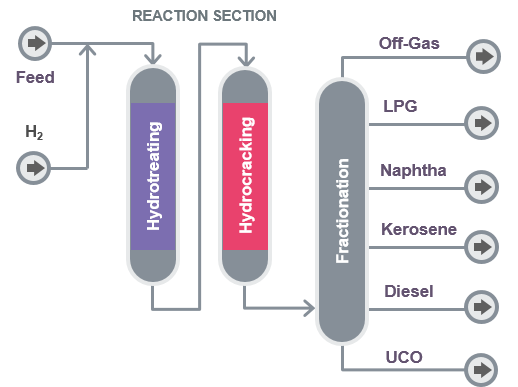The target of Axens Solutions' Hydrorefining technology is the production of a wide choice of suitable lubricant base stocks from a variety of crude sources. Very similar to the hydrocracking process regarding operating conditions, it uses a special amorphous catalyst having a dual function (hydrotreating and cracking).
The production of lube oils with Viscosity Index (VI) values between 95 and 145 is associated with a conversion to lighter fractions between 20 and 60 wt%.
Oil Refining